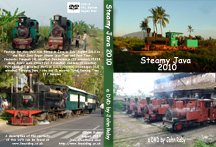Steamy Java 2010 Blog
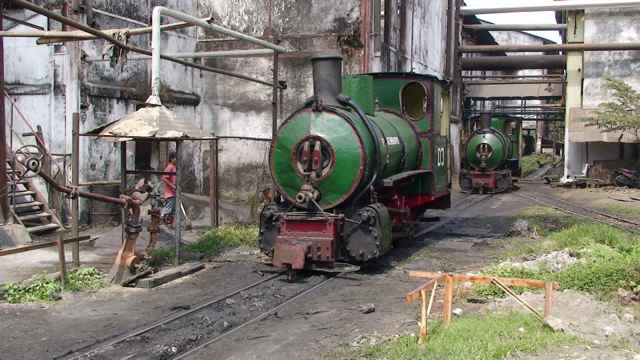
Updated 28 August
| 16 July Jakarta | 17 July Jakarta | 18 July |
19 July Sumberharjo | 20 July
Pangkah |
21 July Sragi, Sumberharjo | 22-23 July |
| Tour Overview |
Part 2 |
Post Tour |
Future Tours |
The blog starts here - 16 July 2010 in Jakarta. I know that there are a mix of narrow gauge railfans and family and friends who will read this so I will try to include a good balance of sugar mill and general interest comment and photos here.
This blog will appear in time order (earliest to latest). Scroll down for the latest news. The date of the latest update will show below the photo above.
First thing to report is the very slow progress through Visa on Arrival and Immigration at Jakarta Airport. This is probably the longest I've had to queue to enter a country anywhere since the bad old days of the 1980s. You really don't need this after being on the go without much sleep for 24 hours. We were telling our group that they ought to allow 2 hours to get through entry procedures and to get to the hotel. It could be more like 3 hours if what I saw is the norm. Anyway, I'm through that and here on the ground in Java for just over 3 weeks. At least Customs was efficient and friendly.
I took a walk around to see if anything had changed since 2008. Unlike then, Java is in a prolonged wet spell but it's clear that the decay of this old part of Jakarta continues despite official intentions to restore the area as a world heritage centre .
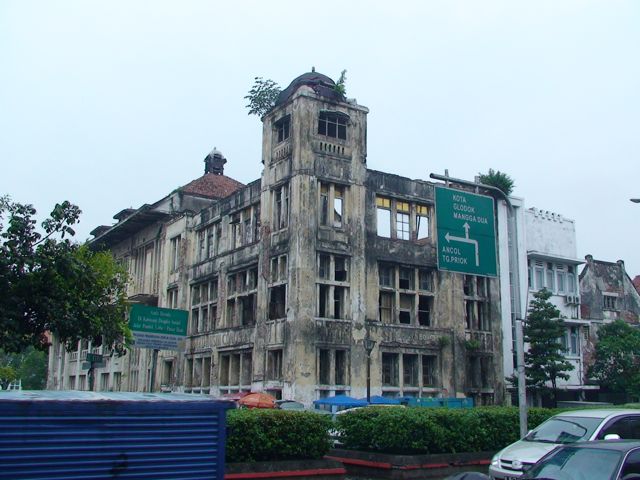
I took a quick look at Kota Station and strolled down the platform but on my way out I was struck by this sign.
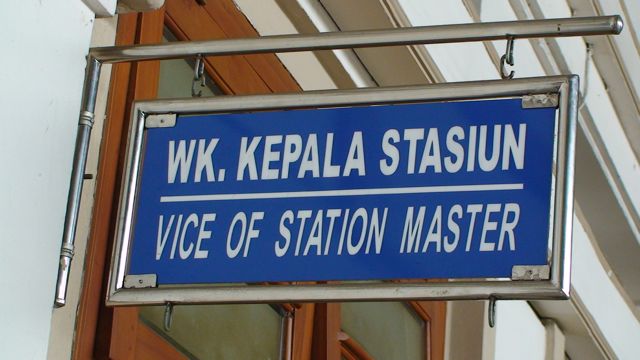
I think we would all be interested in knowing what that is.
I'll pull in a picture from 2008 here to show the restaurant where I again took lunch. This is a restaurant offering food from the central west area of Sumatra around Padang and Bukittingi.
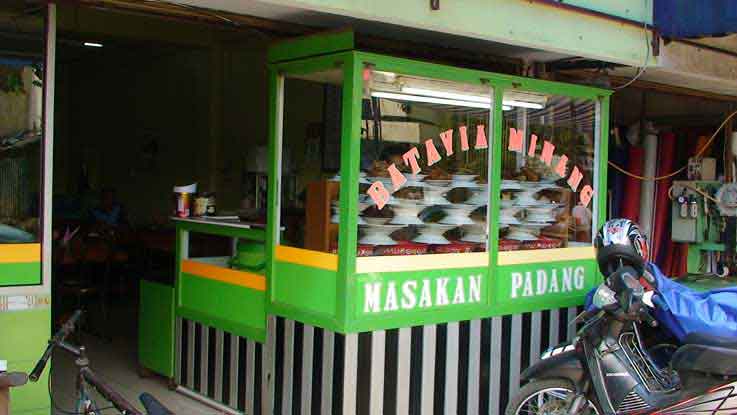
To that picture, I can add 2 new pics of the meal - before and after,
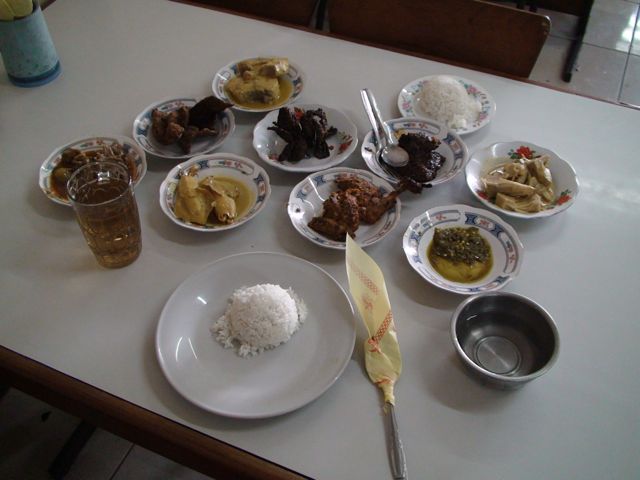
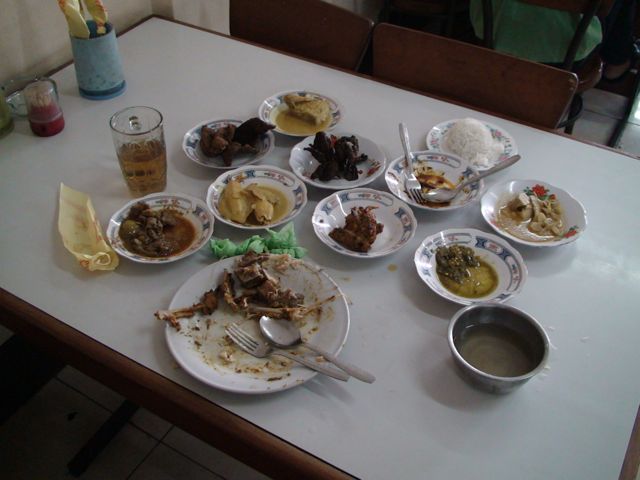
Eating is with spoon and fork or fingers of the right hand (hence the finger bowl). The items I sampled were (from left to right), mutton (good mainly for the sauce), fish, chicken, beef, breadfruit along with the warm sugar-less tea that comes free in a beer glass. At the end, the waiter comes to check what you have eaten and work out the bill. I think I was fairly restrained. I didn't touch the fried lungs or the stewed squid. Everything uneaten goes back into the dishes in the window.
This is the main arrival day (although we do have the bulk of the group here already). Some will be off to the sailing ship harbour at Sunda Kelapa this morning and Taman Mini this afternoon (for both see 2008 blog). I am on reception duty and after seeing off most of the people already here to Taman Mini, I will be awaiting Rob's arrival for a bit of pre-tour planning (I've been asked to have some big, cold beers ready). Things will start to get interesting tomorrow when we leave Jakarta and visit our first sugar mill at Tersana Baru. Reception duties did allow me to take a wander as I went out for the tour leader's beers and this is what I saw:

Plaque attached to an old brick building. Rough translation is that was built in 1730 and was the home/official residence of the Governor General Baron van Imhoff from 1743 to 1750 but you can probably work that out for yourselves. The building is very impressive close up with 12ft doors and windows. The building next door crams 3 storeys into the same height.

On a Saturday morning, Jakarta is relatively quiet but this tranquil scene belies the reality when you take into account the vehicles in motion, the noise and the humidity. There are certainly lots of trees in this part of Jakarta.
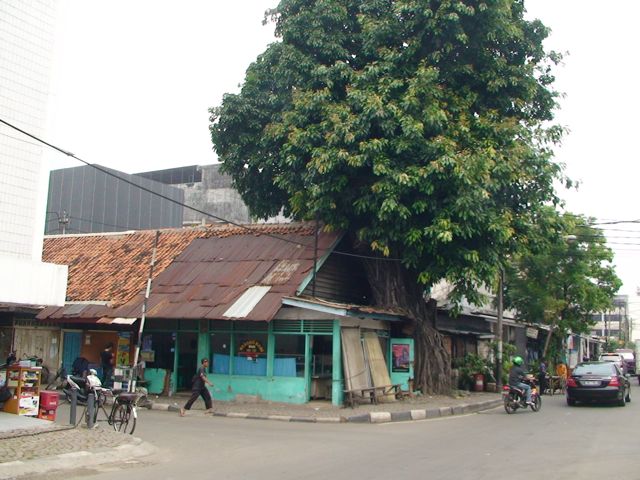
Rob will be taking us to dinner tonight with Peking Duck on the menu. This is the advert outside the restaurant:

The other item is fried prawns in a salty egg batter (any improvements on my translations welcome).
After leaving Jakarta we took about 5 hours to get to Cirebon and then, after lunch, we drove on to Tersana Baru - our first mill. This was a late addition for those who had already visited Taman Mini and we joined the mill tour to see what was left here. What we found was sad, not just for steam but for narrow gauge railway enthusiasts. Steam was well finised but the cane yard had also gone and there were minimal traces of railway. Chinese front-end loaders were moving cane direct from road trucks to be stockpiled and then moved into the mill train.
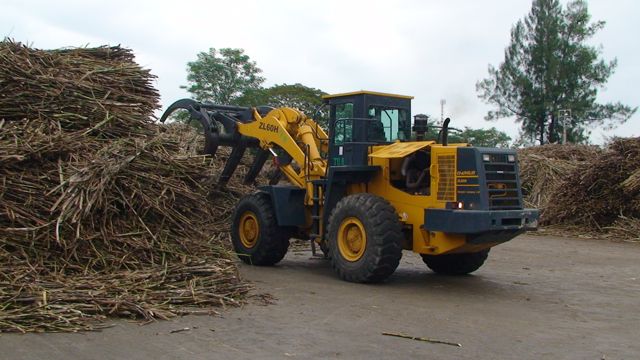
The yard looks likely to be sold off - the new owners will have the job of removing the remaining rails.
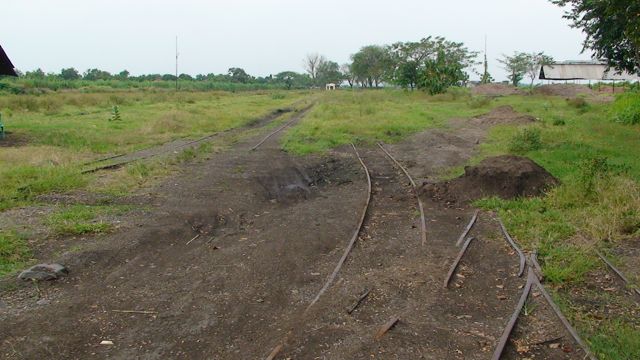
The loco shed is no longer rail linked.
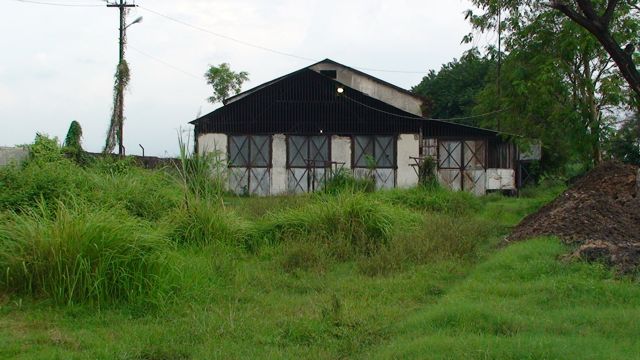
Inside, things are grim.
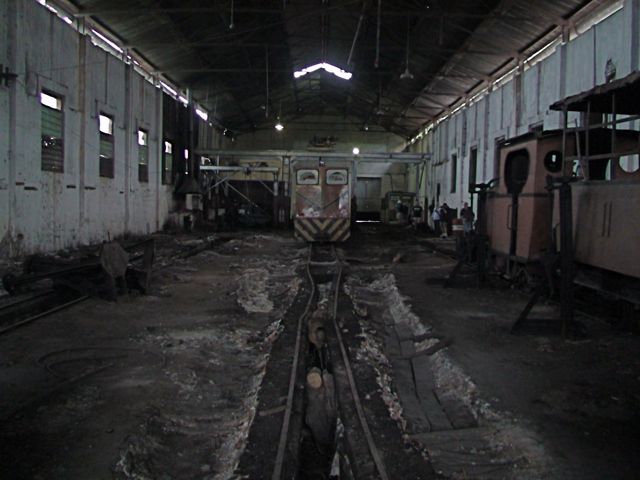
Something (the front end loaders?) has collapsed the pit and produced an interesting gauge.
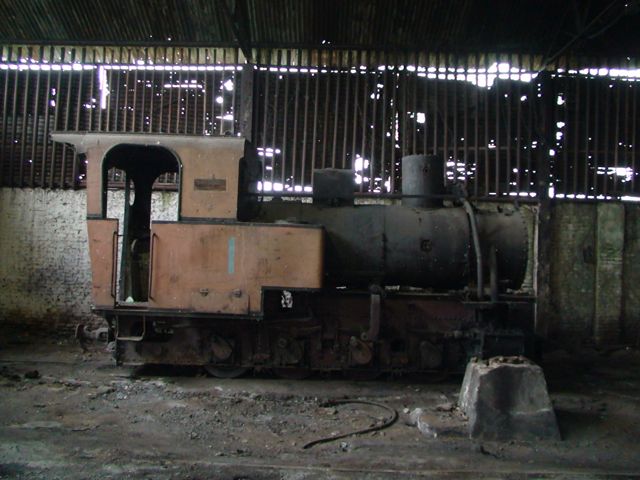
The last 2 steam locos left are No. 1 and No. 6. The diesels including relatively new Japanese diesels look destined for scrap but could still be usefully employed elsewhere at a 700mm gauge mill. However, as they have wrecked the pit and the track, they will have fun dragging them out!
After the depressing start to the trip, a visit to the last mill with regular steam-hauled field trains was a pleasure. We saw the empties going out but didn't catch the fulls coming back as this would have been well after dark. Two steam locos went out in two directions (total 4 locos) along with several diesels. Activity around the mill was also impressive.
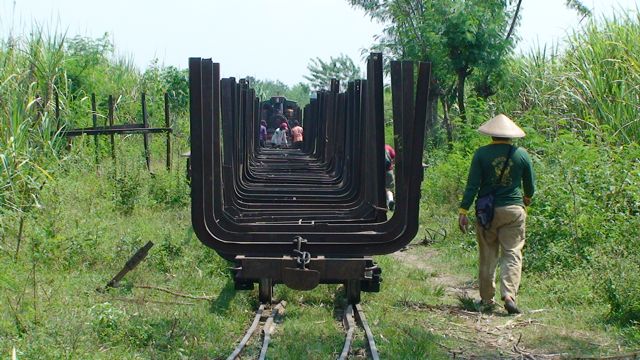
No. 6 with a field train of empties at Sikibo late morning
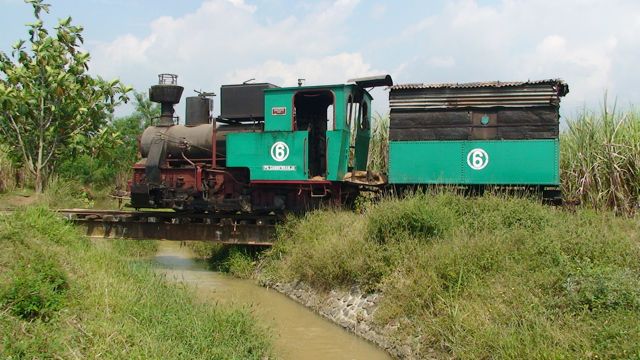
No. 6 posed on the small bridge over the canal
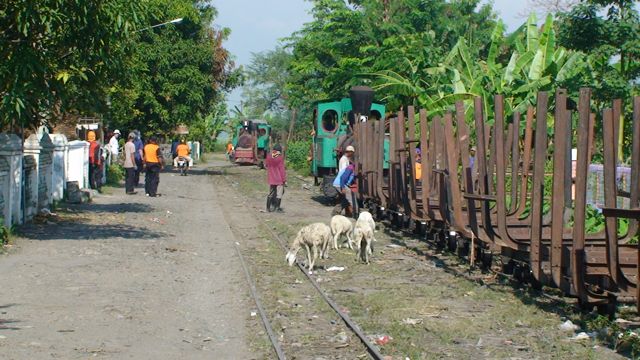
Tenderless No. 3 took empties to the truck yard. I'm not sure we ever worked out what No. 9 (behind) was doing.
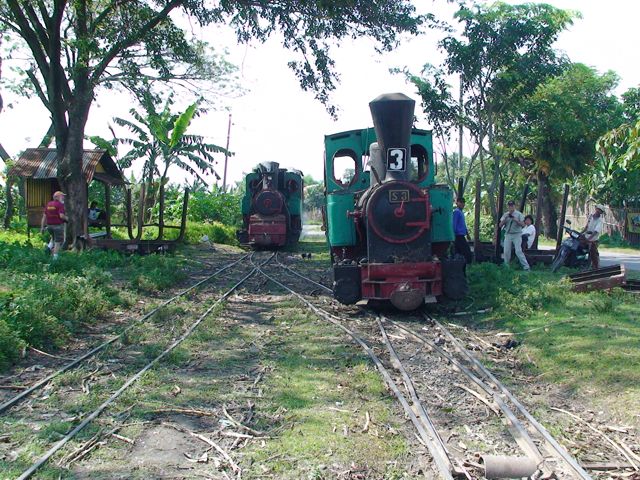
With Cliff (American) on the left and Bob (Kiwi) on the right, we see No. 9 and No. 3 under the trees near the weighbridge.
Without the distraction of field trains (which are hard to find and may not move before sunset), Pangkah is an appealing compact operation from the truck yard to the mill. We saw 3 steam locos in use along with 4 diesels.
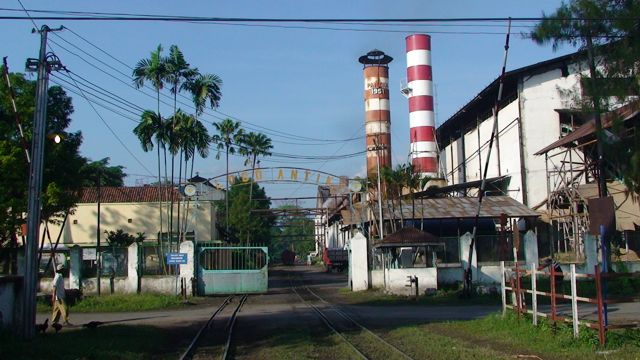
This is the view early morning looking from the truck yard to the mill.
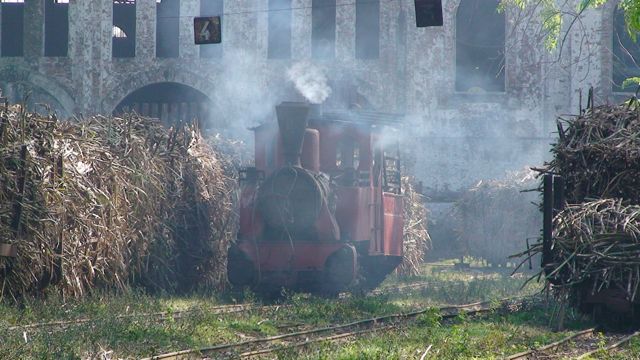
No. 10 was on the mill shunt hauling loads towards the mill train and also using a cable at times to pull the loads on a parallel track.
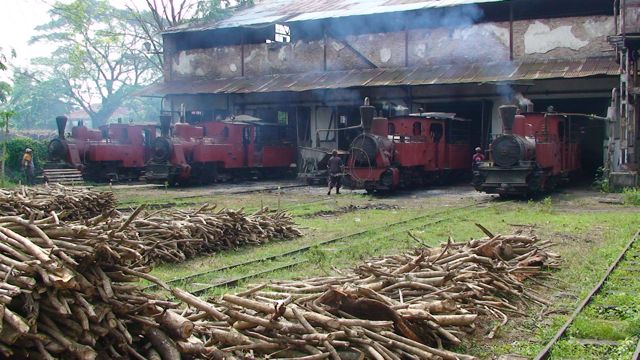
This was the line up at shift change. From left to right, No. 3, No. 1, No. 10 and No. 9. No. 3 worked only in the afternoon. No. 1 was warm but not in steam.
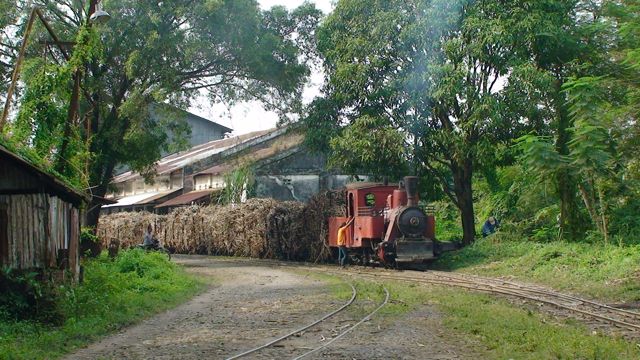
No. 3 waiting for the road to clear near the weighbridge.
Today we set off at our usual time (06:30) for Sragi. We got there and had permission around 08:30 and were just in time for the triple-banker train that often starts of the day shift. This propels all the cane that accummulated overnight. However, today they did it twice. This was the line-up waiting to propel the second train.
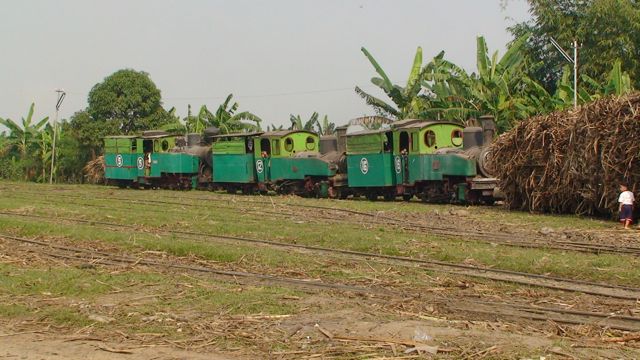
Two of the Hartmann and one Berliner wait to push the train.
We then went to see the closed mill at Comal and the loco shed with all its treasures. Luckily, this year the key was available.
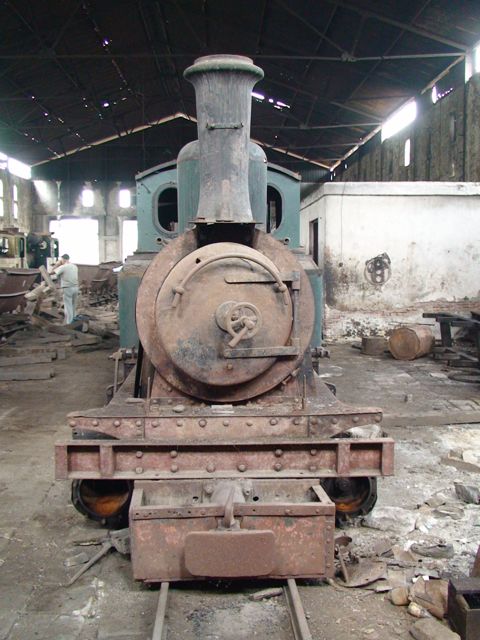
Unidentified loco at Comal looking for a good home.
After lunch, we headed back to Sumberharjo but decided to check out the field lines to the east where we found first one, then two and finally three steam locos all ready to haul cane back to the mill (but after dark, of course). Wonderful to see these locos out in the country 5 km from the mill and waiting to do what used to happen at all mills. Sumberharjo is the last place this happens regularly on Java. I am not aware of any other steam-hauled cane field trains anywhere else in the world today.
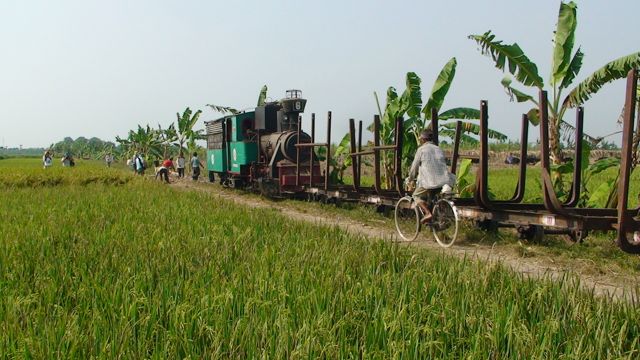
No. 6 seen two days ago on the lines to the west.
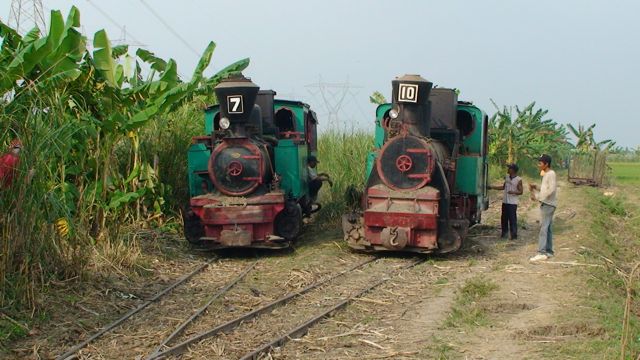
No. 7 and No. 10 at a junction 5 km from the mill.
On our way back to the hotel, we stopped to photograph the fishing boats.


The drive from Tegal to Ambarawa along the north coast to Semarang and then up the hill to Ambarawa was anticipated to take 4.5 to 5 hours but actually took 6.5. However, we still achieved our afternoon train up the rack to Bedono. Departure was at 2:45 which meant that we had lost the sun for part of the decent and arrived back at Ambarawa after 5:00. En route, we saw this sign:
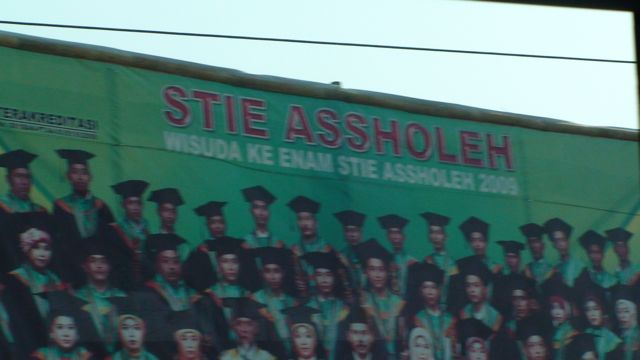
I feel sure it has something to do with education not bums.
Both my pics from Ambarawa come from 22 July when we had another train up the rack starting at 07:00 is beautiful weather.
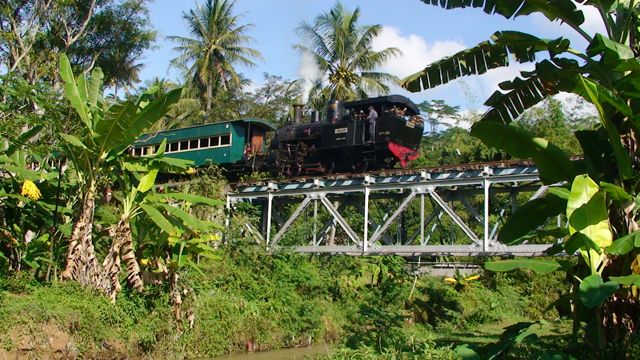
B2503 on the bridge at Jambu about to ascend the rack.
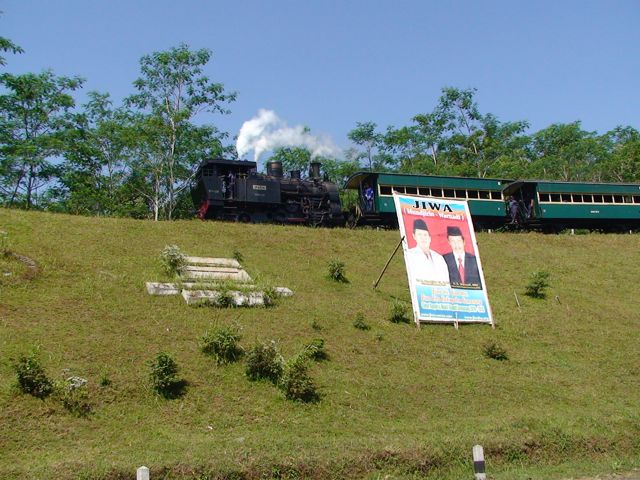
B2503 descends the rack below Bedono past a political poster.
The first part of the Tour Blog ends here. To see what happened next, click here.
To see where we are going next on the tour, check out:
http://www.internationalsteam.co.uk/tours/java2010s.htm
for the main tour, and
http://www.users.waitrose.com/~jraby/posttour.html
for the Post-Tour return to Jakarta.
Rob Dickinson will also be blogging the Java tour but as he is leading the mill tour, it should be somewhat different.
http://www.internationalsteam.co.uk/tours/change2010.htm
John Browning one of our Australian participants will be at it too. To get another viewpoint see http://trainrover.blogspot.com/
You can see my 2008 Java blog here.
